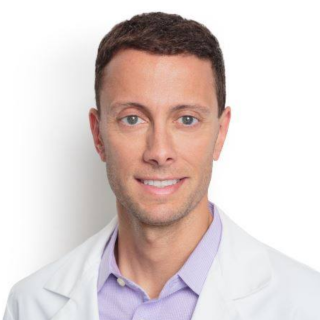
The advent of headache/migraine surgery is one of the more novel developments to emerge from the ever-expanding field of plastic surgery in quite some time. Interestingly and perhaps serendipitously, the possibility of relieving someone of their chronic headaches with decompression of a nerve(s) in the head and neck region came about as a result of astute observations by Bahman Guyuron. Carefully following his many brow lift patients who returned to the office raving about their appearance, he also noted that many were claiming a reduction or elimination in their chronic headache symptoms. Fast forward almost twenty years since these first observations and dozens of peer-reviewed publications by numerous authors later and we have a burgeoning field with the potential to make an impact on patients’ lives much like our work in breast reconstruction or facial transplantation.
This year several exciting developments were on offer at the Migraine/Headache Surgery “pre-conference” which was held during an entire day on September 29th, 2018 as a prelude to the larger national meeting of the American Society of Plastic Surgeons. For starters, it was the second year in a row that we were fortunate enough to have a board-certified neurologist and headache specialist (Dr. Ansari) on our panel discussing the possibility that in some patients suffering from chronic headaches, the problem may be entirely or partially located outside the central nervous system. This statement from an esteemed member of the neurology community, while certainly not the majority view at the moment, lends further credence to the concept that entrapment of peripheral nerves in the head and neck region might be the cause of symptoms in some patients. In the future, I firmly believe that many more neurologists will embrace this concept and plastic surgeons will have a more substantive role in the treatment of these difficult conditions. Secondly, several novel concepts in actual clinical treatment were presented. These innovations included the possibility that selective decompression procedures might be performed in the office setting under local anesthesia, that the often variable, lesser occipital nerve anatomy could be more easily managed by a specific dissection field, that some patients who present with occipital headaches refractory to medical and conventional management might actually be suffering from neurogenic thoracic outlet syndrome and that early intervention in patients presenting with whiplash-type injuries with selective and precise steroid injections may mitigate the need for future surgical intervention.
From a practice management standpoint, it was interesting to hear about innovations in coding and the fact that more practitioners were finding that local insurance companies were recognizing the medical necessity of these procedures and providing coverage. Dr. Jeff Janis, the outgoing ASPS President and headache surgeon, led a tremendous advocacy effort over the past year that culminated in an official position statement from the Society that formalized a stance in which, when more non-invasive and pharmacologic modalities have been unsuccessful, that surgical intervention should be considered the standard of care. Citing nearly 90 peer-reviewed, domestic and international publications, this white paper represents perhaps the most comprehensive argument that surgical intervention by skilled and practiced surgeons is both safe, clinically effective and cost-effective.
Admittedly, as a headache surgeon, peripheral nerve surgeon and plastic surgeon myself, I am biased in favor of surgical treatment having had hundreds of successful patient outcomes myself. I can honestly say that of all the procedures I perform, surgical decompression for chronic headaches has one of the highest success rates and certainly the greatest patient satisfaction rate. My sincere hope is that one day, specialties such as neurology, pain management, physiatry and others will embrace this concept more fully and that the treatment of chronic headaches will have a true multi-disciplinary approach much like that in breast cancer. In many places, the standard of care in treating that disease involves multiple specialties collaborating in a tumor board, putting their respective and collective knowledge together to coordinate and optimize care and outcomes. I remain optimistic that one day we will have “headache boards” at many institutions with plastic surgeons having a seat at the table and I know in my heart that when that day comes, a true revolution in headache care will have been achieved.
Dr. Ziv M. Peled is a plastic and peripheral nerve surgeon practicing in San Francisco and specializing in peripheral nerve surgical procedures, specifically those used in the treatment of chronic headaches/migraines. He completed his plastic surgical training at Harvard Medical School and additional peripheral nerve surgical training under the tutelage of Dr. A. Lee Dellon, one of the pioneers of the field. Conflict: I am a consultant for Pacira Pharmaceuticals and Axogen. None of these consultancies has any bearing on the information I shared with you.







